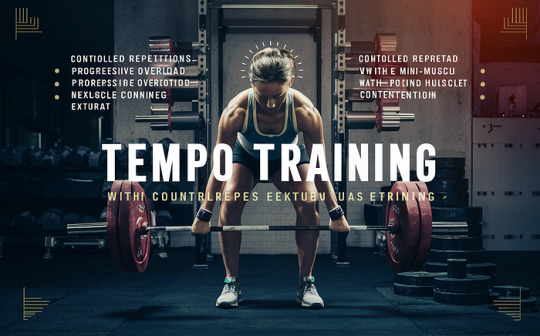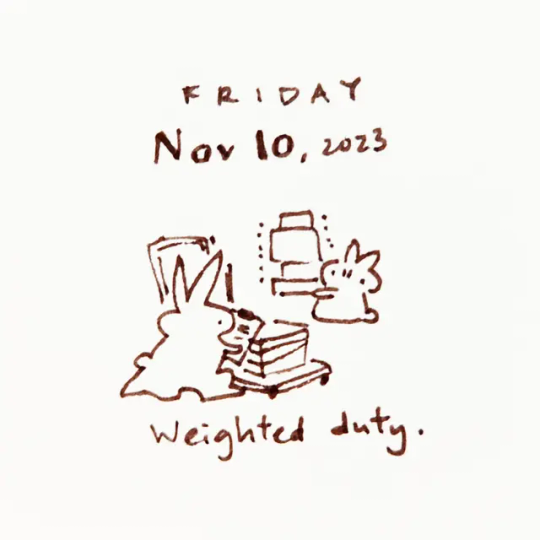#heavy lifting
Explore tagged Tumblr posts
Text

I was a little late to the party this is day 10 of Januarty: Blue. I posted it on my Bluesky account and figured I’d post it here for fun to. Just some blue pikmin in their blue world working all day and not night. 💙
#procreate#digital painting#art#digital#drawing#fan art#nintendo#pikmin#captain olimar#blue#onion#pellet posy#januarty#januarty2025#working for the man#i’m blue#tired#heavy lifting
39 notes
·
View notes
Note
Jasper, what's the heaviest thing you can lift?

#pink onyx au#steven universe au#steven universe#steven universe future#jasper#den notes#jasper speaks#heavy lifting
226 notes
·
View notes
Text
Scarfy is doing some heavy lifting. 🏋️😉🏋️

#kirby of the stars#kirby#too cute#cute art#kirby fanart#kirby series#artists on tumblr#adorable#metal kirby#metal#kirby is a heavy boi#scarfy#poor scarfy#heavy metal#heavy lifting
25 notes
·
View notes
Text
#muscle mommy#muscle flex#workout#working out#strong#ebony#ebony women#ebony babe#ebonybeauty#flex#weight training#heavy lifting#sexy ebony#natural woman#ebonyqueen#ebonygoddess#black women#thick ebony#fitwomen#fit girls#fit beauty#fitlife#225lb#Spotify
159 notes
·
View notes
Text
#viagra boys#youtube#shrimp tech#post punk#sebastian murphy#shrimp shack#shrimp#live#live music#live show#gym#gym rats#fitness gym#fitness#gym rat#gyms#gymlife#gym body#gymmotivation#work out#working out#workout#work#weight#weight lifting#heavy lifting#women who lift#lift#lifting weights#swolebro
16 notes
·
View notes
Text
176,3Lbs Sandbag

I'm getting there Bane!
#project batman#batman#bruce wayne#martial arts#training#exercise#fitness#work out#kung fu#wrestling#sandbag#heavy sandbag#80kg sandbag#heavy lifting#superhero fitblr#fitblr#budoblr#allenamento#entraînement#Bane#new toy#strong man#strongman#me
11 notes
·
View notes
Text

#books#reading#thereadmind#thereadmind.com#book blog#love books#best books#bookish#book review#i love books#top books#booklover#self help books#bookstagram#books and reading#bookshelf#book#bookworm#booklr#bookblr#workout#exercise#weight lifting#heavy lifting#power lifting#arnold schwarzenegger#bodybuilder#strength#strength training#gym
8 notes
·
View notes
Text

When your mental health meds aren’t cutting it
5 notes
·
View notes
Text
😮💨

Thems some good numbers. Gonna put them toward tomorrow (after a solid night sleep tonight), and crush it at the gym in the morning. Probably do a heavy day, more focused on legs.
Hip adductors and abductors, leg curl, leg extension, glute kickback (gotta do this first before the workout group gets over there), and hack squat. Plus chest press, lat pulldown, seated rows, and chest flies. Some shoulder presses too? Just an overall big lift day. Need to grow a fat ass, ya know what I mean?
McDonald's tonight because I have a mighty craving for a Big Mac so I made it fit into my macros and deficit. Big dinner, bug fuel for tomorrow. I better PR like a motherfucker.
#workout#gym#planet fitness#hevy#meal prep#weight loss journey#weight loss#diet#lifting#weight loss motivation#weight lifting#strength training#gym motivation#gym rat#heavy lifting#leg day
4 notes
·
View notes
Text
Team work 🤭
more like this
#team work#ants#impressive#power#strength#skill#amazing#awesome#meme humor#tumblr memes#work in progress#working#jobs#no way#heavy lifting#insane#crazy#heavy load#oversized
7 notes
·
View notes
Text
Ego Lifting Definition

Did you know that ego lifting, the practice of prioritizing heavy weights over proper form, is a widespread phenomenon in gyms across the country? In fact, studies have shown that a staggering 80% of gym-goers engage in ego lifting at some point during their training routines. This means that the majority of individuals are putting themselves at risk of serious injury and hindering their progress by letting their egos drive their workouts.
Key Takeaways: Ego lifting involves prioritizing heavy weights over proper form in the gym. About 80% of gym-goers engage in ego lifting, putting themselves at risk of injury. Ego lifting can lead to muscle imbalances and hindered muscle activation. Finding the right balance between form and weight is crucial for optimal results. Lifting smart and prioritizing technique over ego-driven weights is the key to long-term success.
What is Ego Lifting?
When it comes to weightlifting, ego lifting is a term that often surfaces in the fitness community. But what exactly does it mean? Ego lifting refers to the mindset of prioritizing heavy weights and pushing for maximum strength at the expense of proper form and technique.
Many individuals engage in ego lifting because they believe that lifting heavier weights equates to superior strength and muscle gains. It becomes a competition with oneself or with others at the gym, as the focus shifts from effective training to the desire for validation or admiration.
Unfortunately, this mindset can have serious consequences. Ego lifting increases the risk of injury significantly, as lifting weights beyond one’s capabilities or without proper form places excessive stress on the joints, muscles, and connective tissues.
Source: Health & Fitness Magazine
“Ego lifting can be tempting, especially when you see others lifting heavy weights. However, it’s important to remember that proper form is crucial for long-term progress and injury prevention. Don’t let your ego dictate your training; focus on mastering technique first.”
Additionally, ego lifting often results in muscle imbalances and limited muscle activation. When form takes a back seat, certain muscles may become overworked while others remain underutilized. This imbalance can hinder overall strength development and limit the effectiveness of your training.
Ego lifting should not be confused with challenging oneself or setting goals to enhance performance. It’s about finding the right balance: lifting weights that are challenging but manageable without compromising form and risking injury.
Why Do People Engage in Ego Lifting?
There are several factors that contribute to the prevalence of ego lifting in the gym. In many cases, it stems from the desire to prove one’s strength or prowess to oneself or others. These individuals may seek validation and recognition from their peers and may mistakenly believe that lifting heavier weights is the only way to achieve this.
Moreover, social media has played a significant role in promoting the culture of ego lifting. With countless videos and images of people showcasing their impressive strength feats, the pressure to measure up and gain online recognition can be influential.
It’s essential to remember that the true measure of success in weightlifting lies in the ability to effectively target the desired muscle groups, maintain proper form, and progress gradually over time. Prioritizing technique over ego-driven lifting will not only prevent injuries but also foster sustainable long-term progress.
The Impacts of Ego Lifting
When it comes to weightlifting, many individuals fall into the trap of ego lifting, prioritizing heavy weights over proper form. However, this ego-driven approach can have negative impacts on both your physical health and overall training progress.
Increased Risk of Injury
Ego lifting often involves pushing your body beyond its limits, disregarding proper technique and form. This increases the risk of injuries such as strained muscles, sprained joints, and even more serious conditions like herniated discs. Pushing too hard to lift heavy weights can put unnecessary strain on your body, leading to long-lasting setbacks in your fitness journey.
Muscle Imbalances

Hindered Muscle Activation
Proper form is essential for activating the targeted muscles effectively during weightlifting. However, ego lifting often involves sacrificing form in favor of lifting heavier weights. This can result in reduced muscle activation as your body compensates by recruiting other muscle groups to assist in the movement. Ultimately, this hinders the muscle groups you intended to target, limiting your gains and slowing down your progress.
To ensure a safe and effective weightlifting routine, it is crucial to prioritize proper form over ego-driven lifting. By focusing on technique and gradually increasing weights while maintaining good form, you can reduce the risk of injury, promote muscle balance, and maximize muscle activation.
Form vs. Weight: Finding the Balance
When it comes to your training routine, finding the right balance between form and weight is crucial for your long-term success. Proper form not only reduces the risk of injury but also allows for optimal muscle activation and growth. On the other hand, lifting heavy weights can help you challenge your limits and increase your strength. It’s important to strike a balance between the two to maximize your results.
By prioritizing form, you ensure that you are executing exercises with proper technique and alignment. This not only minimizes the risk of injuries such as sprains, strains, or muscle imbalances but also ensures that you are targeting the intended muscles effectively. Focusing on form allows you to engage the correct muscle fibers, facilitating efficient growth and development.
However, it’s equally important to challenge yourself with progressive overload and heavier weights to continue making progress. Lifting heavier weights stimulates your muscles to adapt and grow stronger. It’s a fine line to walk, as sacrificing form for the sake of lifting heavier weights can lead to compromised technique and potential injuries.
The key is to prioritize proper form while gradually increasing the weight over time. This ensures that you are constantly challenging yourself while maintaining the integrity of each exercise. By paying attention to your form and executing exercises correctly, you will not only reduce the risk of injuries but also optimize your muscle activation and growth.
The importance of incorporating proper form and weight balance:
“Finding the balance between form and weight is crucial for maximizing your training results. Prioritizing proper form minimizes the risk of injury and allows for optimal muscle activation, while gradually increasing weight challenges your muscles to grow stronger.”
Benefits of Proper Form and Weight Balance : Risks of Ignoring Form and Prioritizing Weight - Reduced risk of injuries - Efficient muscle activation - Targeted muscle growth - Improved longevity in training — Increased risk of sprains and strains - Muscle imbalances - Stagnant progress - Potential long-term damage
Striking the right balance between form and weight requires self-awareness, patience, and constant evaluation. It’s important to listen to your body, focus on proper technique, and gradually increase the weight as you become more comfortable and confident with your form. Remember, it’s not just about lifting heavy weights, but about doing it safely and effectively for long-term progress.

Lifting Smart: Tips and Techniques
When it comes to weightlifting, prioritizing proper form over ego-driven lifting is crucial for long-term success and injury prevention. Below are some valuable tips and techniques to help you lift smarter and maximize your training results.
1. Tempo Training
Tempo training is a technique that involves controlling the tempo or speed of each repetition. By slowing down the eccentric (lowering) phase and focusing on proper muscle contraction during the concentric (lifting) phase, you can enhance muscle activation and promote better form. Incorporate a 2–3 second eccentric phase and explosive concentric phase into your lifts to improve body control and build strength more effectively.
2. Progressive Overload
Progressive overload is the gradual increase in training stimulus to continually challenge your muscles and promote muscle growth. Instead of solely focusing on lifting heavier weights, aim to progressively increase the intensity, volume, or frequency of your workouts. This could involve adding more sets or reps, reducing rest periods, or incorporating advanced variations of exercises. Remember to maintain proper form throughout, even as you increase the challenge level.
3. Mind-Muscle Connection
The mind-muscle connection refers to the ability to consciously focus on and activate specific muscles during exercises. By developing a strong mind-muscle connection, you can ensure that the targeted muscles are properly engaged and working throughout your lifts. Visualize the muscle working, concentrate on the muscle contraction, and avoid relying solely on momentum or external forces to move the weight. This technique can enhance muscle activation, improve form, and prevent potential injuries caused by compensatory movements.
By implementing these tips and techniques into your training routine, you can lift smarter, enhance your form, and achieve better results. Remember, the goal is not just to lift heavier weights but to lift with proper form, ensuring safety and sustainable progress over time.
Overcoming Ego Lifting Habits
When it comes to weightlifting, it’s easy to get caught up in the desire to lift heavier and impress others. However, prioritizing heavy weights over proper technique and form can lead to a range of negative consequences. To ensure long-term progress and minimize the risk of injury, it’s essential to overcome ego lifting habits and shift your mindset towards technique and form.
One effective strategy for overcoming ego lifting habits is to focus on progressive overload. Instead of constantly trying to lift heavier weights, gradually increase the difficulty of your exercises by adding more repetitions, sets, or resistance. This allows your muscles to adapt and grow stronger without sacrificing form.
Another helpful technique is to incorporate tempo training into your workout routine. By slowing down the eccentric (lowering) phase of each exercise, you can enhance muscle engagement and control. This not only reduces the likelihood of relying on momentum but also promotes better mind-muscle connection and overall form.
“Your ego wants you to lift heavy, but your body needs you to lift smart.”
Additionally, focusing on proper breathing during your lifts can help you stay grounded and maintain better control. Take deep breaths in and out, ensuring a consistent flow of oxygen to your muscles. This can prevent unnecessary tension, which often occurs when ego takes over.
It’s also important to listen to your body and prioritize quality over quantity. Give yourself ample time to recover between workouts and pay attention to any signs of strain or discomfort. Incorporating mobility and flexibility exercises into your routine can help improve your range of motion and decrease the likelihood of injuries caused by ego-driven lifting.
Lastly, surrounding yourself with a supportive and knowledgeable community can greatly aid in overcoming ego lifting habits. Seek guidance from experienced trainers or workout partners who prioritize technique and form. Their expertise and encouragement can provide valuable insights and keep you accountable on your journey towards sustainable training progress.
By implementing these strategies, you can break free from ego lifting habits and establish a foundation built on technique, form, and long-term success. Remember, the ultimate goal of weightlifting is not to impress others with the amount of weight you can lift but to prioritize your overall well-being and achieve your fitness goals in a safe and effective manner.
Signs of Ego Lifting in Others
When observing fellow gym-goers, it’s important to be able to identify signs of ego lifting to ensure their safety and help them prioritize proper form. Here are some common indicators to look out for:
Inconsistent range of motion: Watch out for lifters who sacrifice proper technique by not completing the full range of motion. This can indicate a focus on lifting heavier weights rather than maintaining form. Excessive use of momentum: If you notice individuals using excessive swinging or jerking motions to move the weight, it’s a clear sign of ego lifting. Proper control and stability should be prioritized over momentum. Ignoring safety measures: Those who disregard safety measures such as not using a spotter when attempting heavy lifts or neglecting to use safety clips on barbells may be driven by ego rather than training responsibly. Frequent need for assistance: Someone who consistently relies on others to help them complete their lifts and is unable to maintain proper form on their own could be ego lifting. Excessive grunting: While some exertion is normal during intense workouts, excessive grunting or vocalization solely for attention-seeking purposes is a common sign of ego lifting.
Remember, spotting signs of ego lifting in others is not about judgment but rather about promoting a safe and effective training environment. If you notice these behaviors, approach the individual with kindness and offer guidance on proper form and technique.
By helping others prioritize form and safety, you contribute to a supportive community that benefits everyone’s progress and reduces the risk of injuries.
Conclusion
In conclusion, ego lifting may seem appealing and impressive in the short term, but it can have detrimental effects on your overall training progress and physical well-being. It is crucial to prioritize proper form over the desire to lift heavier weights, as this approach ensures optimal muscle activation and reduces the risk of injury.
By finding the right balance between form and weight, you can achieve long-term training success and avoid muscle imbalances. Remember, lifting smart is the key to achieving your strength goals while maintaining a sustainable and injury-free training routine.
Take advantage of techniques like tempo training and progressive overload to challenge yourself without compromising form. Focus on establishing a strong mind-muscle connection to maximize muscle recruitment during your workouts.
Lastly, don’t forget to be mindful of ego lifting habits in yourself and others. Offer support and guidance to individuals who prioritize lifting heavy weights at the expense of proper form. By cultivating a supportive training environment, we can all strive towards smarter, safer, and more effective workouts.
FAQ
What is ego lifting?
Ego lifting refers to the practice of prioritizing lifting heavier weights over maintaining proper form during exercises. It involves allowing your ego to drive your training, focusing more on the quantity of weight lifted rather than the quality of movement.
How does ego lifting manifest in the gym?
Ego lifting is often characterized by individuals pushing themselves to lift weights that are beyond their actual capabilities, disregarding proper technique and form. It can involve excessive weight loading, cheating reps, or sacrificing range of motion to showcase strength.
What are the impacts of ego lifting?
Ego lifting can have negative impacts on both physical health and training progress. It increases the risk of injury due to incorrect form and puts unnecessary strain on joints and muscles. Ego lifting can also lead to muscle imbalances and hindered muscle activation, limiting overall progress.
How do I find the balance between form and weight?
It is essential to prioritize proper form over lifting heavy weights. Finding the right balance involves focusing on maintaining correct technique and gradually increasing weights to challenge yourself without compromising form. Emphasizing quality over quantity will lead to better results and reduce the risk of injury.
What are some tips and techniques for lifting smart?
Lifting smart involves techniques such as incorporating tempo training, which emphasizes controlled and deliberate movements. Progressive overload, gradually increasing the weight lifted, is also effective. Additionally, focusing on mind-muscle connection and engaging the targeted muscles during exercises enhances the effectiveness of each lift.
How can I overcome ego lifting habits?
Overcoming ego lifting habits requires a shift in mindset. Focus on the importance of technique and form rather than solely on lifting heavier weights. Gradually reduce weights to ensure proper form, incorporate corrective exercises, and seek professional guidance if needed. Emphasize progress built on a solid foundation of good form.
What are some signs of ego lifting in others?
Common signs of ego lifting in others include excessive weight swinging or using momentum to lift weights, performing partial reps instead of full range-of-motion, and consistently sacrificing form for higher weights. Additionally, lifting weights that are clearly beyond their ability and displaying risky behaviors are indicators of ego lifting.
What is the importance of prioritizing proper form?
Prioritizing proper form is crucial for maximizing the benefits of each exercise and reducing the risk of injury. Maintaining correct technique allows for optimal muscle activation, ensures balanced development, and facilitates long-term training progress. It is the foundation for safe and effective strength training.
#ego lifting#workout#ego lifting definition#lifting tips#weight lifting#heavy lifting#power lifting#fitness
7 notes
·
View notes
Text
Entertainment To-Do List: Week of 10/18/24
Keepin’ it poppin’ (CREDIT: CBS/Screenshot) Every week, I list all the upcoming (or recently released) movies, TV shows, albums, podcasts, etc. that I believe are worth checking out. Movies –Anora (Theaters) –Goodrich (Theaters) –Smile 2 (Theaters) –Woman of the Hour (October 18 on Netflix) – Anna Kendrick’s directorial debut. TV –Happy’s Place Series Premiere (October 18 on NBC) –…

View On WordPress
#2024 Rock & Roll Hall of Fame Induction Ceremony#Anora#Fate & Alcohol#Goodrich#Happy&039;s Place#Heavy Lifting#Japandroids#Jennifer Hudson#Kylie Minogue#MC5#Poppa&039;s House#Rock & Roll Hall of Fame#Rock & Roll Hall of Fame Induction Ceremony#Slipping Away#Smile 2#Tension II#The Gift of Love#Tim Heidecker#What We Do in the Shadows#Woman of the Hour
2 notes
·
View notes
Text
Ufff 140 kg (309lbs) in bench press.
I didn't even believe I could lift it, the other time I failed 135kg and today I was able to do 140kg
#gym#powerlifting#training#weight lifting#fitness#workout#power lifting#heavy lifting#bench press#work in progress#healthy#hard work
7 notes
·
View notes
Text
AWPOLLAR - EMPOWER IN STRIDES FITNESS
ABOUT ME - Who am I? What’s the point of this blog? Keep reading to find out
Hi, I’m Awpollar, a Bay Area based fitness enjoyer.
I’ve been lifting for over a year and a half now and have come to realize that I’d love to get people into lifting (or convince them to try out whatever sport or physical activity they want). I want to empower brown women, specifically south Asian women, to be open to lifting.
However, my platform is open to all people and I hope that my posts can be inspiring to anyone who has been wanting to see realistic representation in fitness. I want to show you all that it’s okay to take up space, especially in environments and industries where the majority is not representative of yourself.
My mission is to build a community of like minded individuals who are passionate about building one another up and encourage not just fitness but health. Everyone comes from different situations and there’s no one size fits all when it comes to the definition of “fitness”. Being able to experience the ups and downs of that journey to see how people come out on the other side is what makes fitness fun for me.
If you’re interested in seeing parts of my journey or simply connecting, please give me a follow and message me! Always happy to chat. I do want to note I am NOT a certified personal trainer, simply someone who enjoys weight lifting.
What you can expect on this blog:
Workout videos - snippets of what I do when I train, usually reposting from TikTok or ig so follow me there!
Musings - I like having a space to throw my thoughts out
Arts & crafts every now and then
Honestly that’s it for now, but let’s go!!!!!
#brown girls who lift#weight lifting#fitness#girls who lift#muscle#fitness blog#heavy lifting#desi fitness#desi girl#I think that’s enough tags for now#gymblr#working out#self improvement
3 notes
·
View notes
Text

(Source: Jensen Ackles Instagram Stories)
Super Strong!
14 notes
·
View notes
